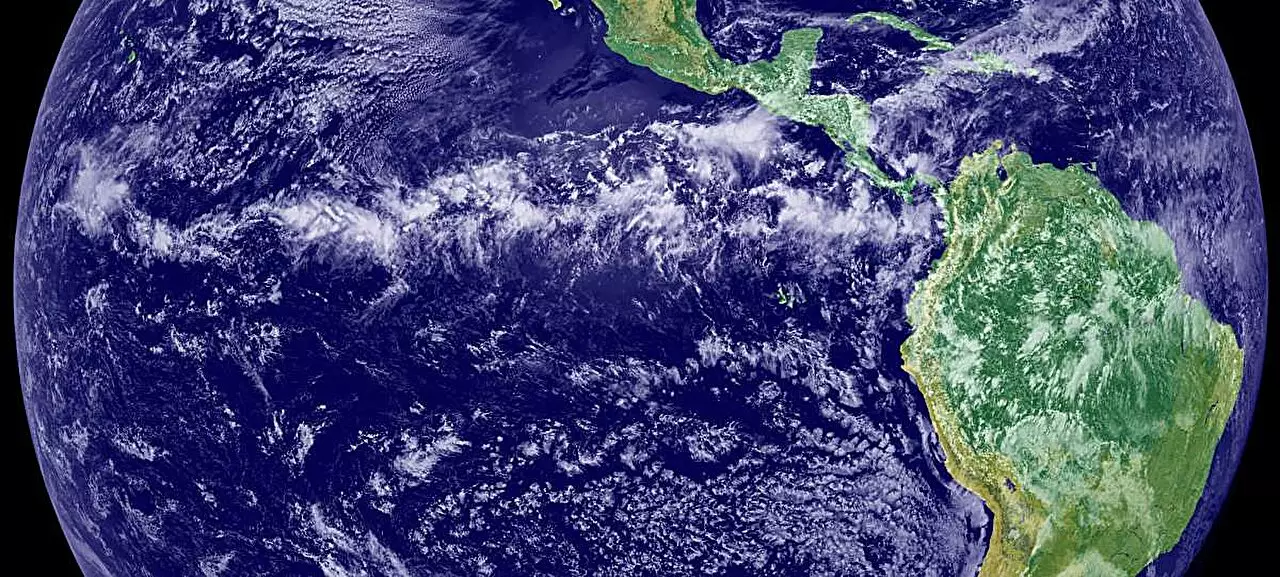The severity of climate change has reached alarming heights, with the summer of 2024 marking the hottest season on record. This trend is not merely an anomaly; rather, it serves as a grim reminder of humanity’s impact on the environment. Across various continents, particularly in the Northern Hemisphere, this increase in temperature has triggered catastrophic droughts, relentless heat waves, and a plethora of health crises. The pressing question remains: why are these changes occurring? Recent research led by Dr. Rei Chemke from the Weizmann Institute of Science sheds light on the connection between rising temperatures and the weakening of Earth’s vital air circulation systems.
Understanding Air Circulation Systems
Air circulation systems play a fundamental role in distributing heat and moisture across the planet. Two critical components of these systems are storm tracks and the Hadley circulation. Storm tracks, which consist of a series of high-pressure and low-pressure systems, run predominantly from west to east and determine the flow of wind and precipitation. The Hadley circulation, on the other hand, describes the process where warm air rises at the equator, flowing toward the poles before descending in the subtropics and returning to the equator—truly a continuous cycle that is essential for maintaining climate balance.
Over the last few decades, researchers have observed a troubling trend: both storm tracks and Hadley circulation have exhibited a weakening, a shift that has serious implications for global climate. Historically, it has been established that human-induced greenhouse gas emissions have contributed significantly to the deterioration of the Hadley circulation. In a groundbreaking study, Chemke and his colleagues demonstrated that this weakening of storm tracks is likewise driven by anthropogenic factors, specifically human emissions of CO2 and aerosols.
One of the primary mechanisms behind the weakening of storm tracks is the decrease in temperature gradients between the high and low latitudes. As emissions of greenhouse gases warm the atmosphere, northern latitudes begin to experience higher temperatures compared to their southern counterparts. This reduction in temperature diversity disrupts the atmospheric conditions required for storm formation, essentially rendering the storm tracks less effective at transporting essential cool air from oceans to land.
Chemke explains that storms are critical during the summer months, not only for their precipitation but also for their ability to moderate land temperatures by bringing in cooler air. With the weakening of storm systems due to human influences, regions expected to receive relief from summer heat are left vulnerable, experiencing heat events that become increasingly extreme and dangerous.
Interestingly, while much focus has been placed on the repercussions of human emissions, the role of natural factors has often been underappreciated. The complexity of climate dynamics suggests that natural phenomena, such as volcanic eruptions and solar fluxes, previously played significant roles in altering climate systems. Chemke’s second study provides an extensive historical analysis that indicates natural factors boosted the Hadley circulation over the last millennium. However, the current situation stands in stark contrast; now, it is human activity that dominantly drives a weakening of this vital circulation.
Through model simulations, researchers were able to track the climate’s state across centuries, proving that while natural influences had collectively worked towards strengthening the Hadley circulation in the past, today’s warming climate—primarily due to anthropogenic emissions—acts contrary to those previous trends.
The findings from Chemke’s studies not only illuminate the significant impacts of human activity on climate systems but also urge scientists to reassess their understanding of natural forces at play. The predominant focus on human-induced changes has overshadowed the vital roles these natural elements continue to hold. By integrating factors such as volcanic activity and natural greenhouse gas emissions into climate models, scientists could gain a more holistic understanding of the dynamics that govern our climate.
Chemke emphasizes that while man-made emissions unquestionably exert a strong influence on climate, acknowledging the historical role of natural events can enhance predictions about future climate scenarios. The intricate interplay between human actions and natural forces is essential for devising effective solutions to mitigate the ongoing climate crisis.
As we confront the increasingly harsh realities of climate change, it is crucial we recognize both the immediate and long-term impacts of our actions. The evidence compiled by Chemke and his team reveals that our understanding of climate dynamics must incorporate a wider scope, one that respects both human influence and the unpredictable aspects of nature. Only by comprehensively analyzing these factors can we hope to address the challenges posed by a warming world effectively.

